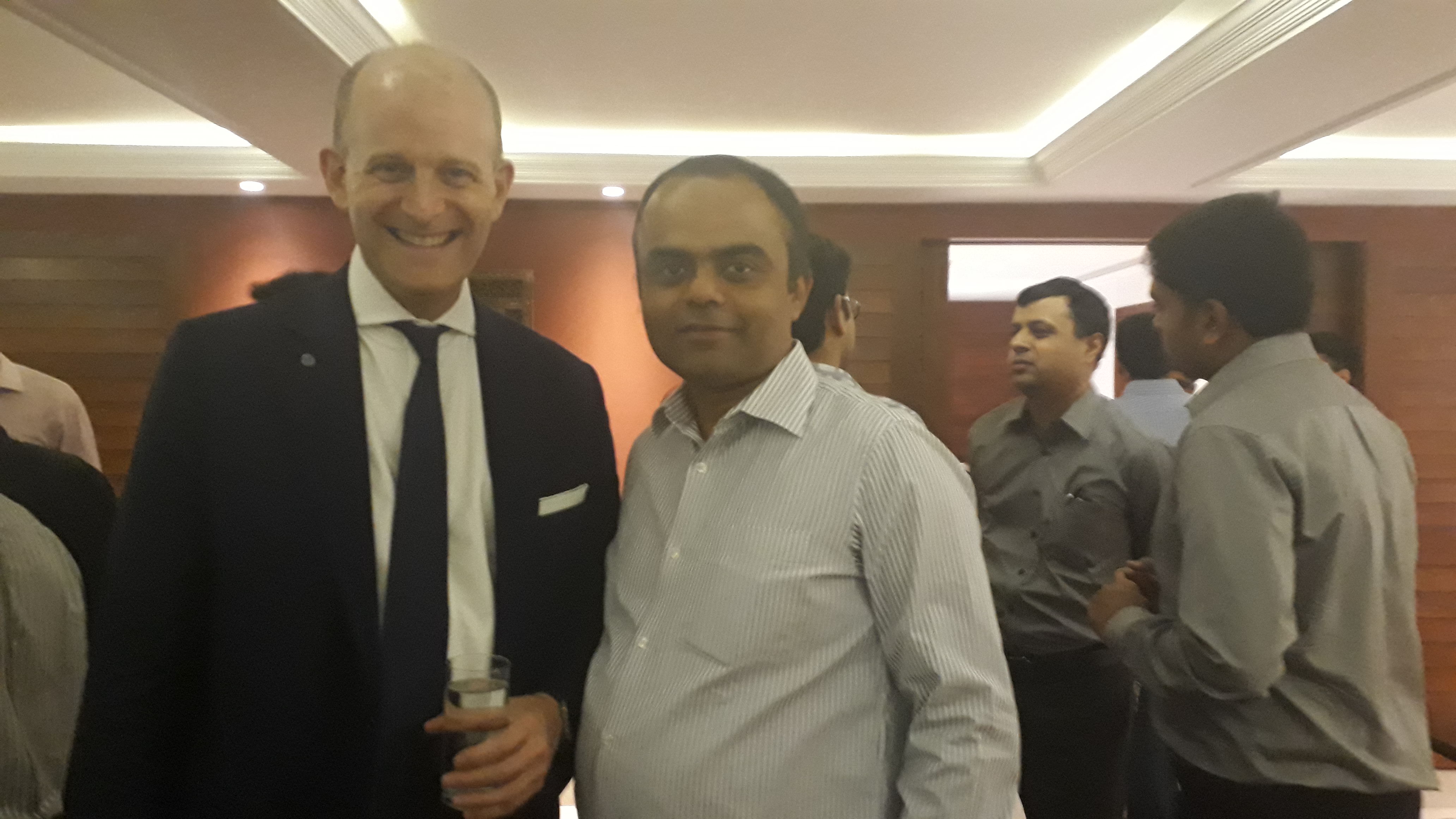- May 4, 2017
- Posted by: annlin@india.cfasociety.org
- Category:BLOG, Events, Kolkata, Speaker Events

Contributed by: Ashwini Damani
On 24th April 2017, the Kolkata Chapter of CFA Society India organised a session on “How to Value any Company in the World with Valuation Model”. It was conducted by a prolific speaker, Andrew Stotz, CFA who has been voted the No. 1 Analyst in Thailand for the years 2008 and 2009. Being a tech savvy speaker that he was, the presentation started off in a unique style, with almost the entire presentation being run through an iPhone and live blogged by his associates sitting in Thailand. In fact, the entire presentation (replete with pictures of the day) was already uploaded by the end of the session on the blog www.becomeabetterinvestor.net/myvac
• Andrew dwelled on the fact that, the world of investing and finance can be very complex, and hence it is imperative to keep things ‘Simple’. It is only by keeping things simple, will you be able to make people follow you, hear you and understand you – “Simplicity is the ultimate sophistication” he said.
• He spoke about how his entrepreneurial journey with his business CoffeWorks has helped him become a better analyst. He remarked that, because he ran a business himself, he was more aware of challenges and risk involved in a business. Moreover, being a businessman also helped him in asking the right questions to the management and understand its abilities better.
• He mentioned that ethics, values and fighting spirit are the most important traits for any skilled person to attain success.
• Andrew underlined a simple process to identify if there can be an increase in the value of a company.
o Revenue – Company should strive to increase it
o Cost – Company should strive to reduce it
o Investment Amount – Company should strive to reduce it
o Risk – Company should strive to reduce it
This could be simplified mathematically by the following formula
((Revenue 0 – Costs 0) (1 – Retention Rate 0)(1+growth)) / (Cost of equity – growth)
He said that any company which could manage the above four areas, would end up increasing dividends being paid out to the shareholders.
• Going ahead on to his rigorous framework, Andrew gave ten steps Valuation Model, for valuing any company in the world. In his view, the first 7 points are about forecasting and the last 3 points are about valuation. So he emphasised that if we can get the forecasting part right, we could do a better job at valuation – and true to the part he said, forecasting cannot be done by sitting behind a computer, but rather going out on the field and getting some raw data points. The 10 points are as follows:
1. Revenue growth – It is the most important piece in the entire valuation chain. Whatever you do, in the end, you have to dumb it down to a growth rate. Hence it is important to get this part right. An analyst needs to forecast the trend of revenue growth by assessing how fast or slow the company is growing and what kind of latent demand exists for the product.
2. The cost to create – Core profitability of the product outlines the competency of the management. One should critically assess the margins and its expansion potential.
3. Cost to run – the Selling, General and Administrative Expenses (SGA) costs of a company should be examined carefully.
4. Investment in core Assets- What kind of amount is locked in the core investments of the company? The analyst should also find out if management can bring it down, or it should be increased to keep pace with the growing demand.
5. Investment in inventory – Should be minimalistic, because, in the end, you maintain and grow your market by liquidating the inventory.
6. Net accounts receivable – Should be trending lower relative to the sales. Higher net accounts receivable will entail higher costs.
7. Dividend payout Ratio –This is what you finally payout to the shareholders. The analyst should effectively assess current payouts and expected future dividends.
8. The cost of equity – It is a measure of risk of the business and gets reflected in the discounting model.
9. Fade of investment return – What will be the tapering growth going ahead.
10. Terminal growth – the horizon value.
Not only was the content relevant and great, but his style of presentation was also brilliant. We at the Kolkata chapter, we are thankful to Andrew.
-AD








